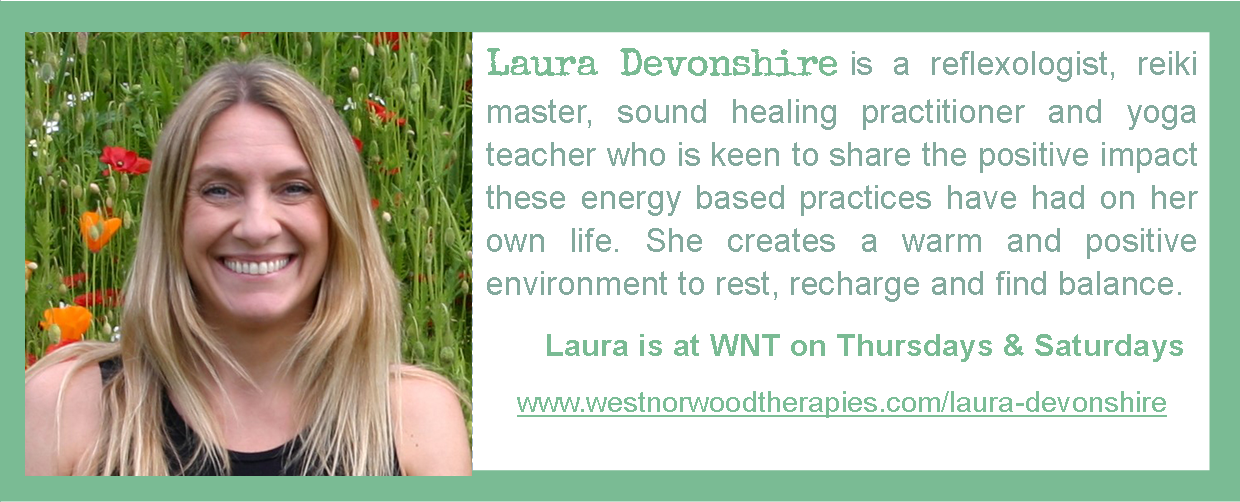|
April is Stress Awareness Month and our pro de-stresser Laura shares some information about different aspects of stress and how it can impact us with some suggestions as to how you can support yourself in times of undue stress and strain Stress is the body's reaction to feeling threatened or under pressure. It affects everyone, of all ages, in different ways and is an unavoidable part of life. According to the Mental health Foundation 74% of UK adults have felt so stressed at some point over the last year they felt overwhelmed or unable to cope. When we think of the word stress it usually comes with a negative bias, however, stress isn’t always a bad thing. It makes me think of the Goldilocks Principle: too hot, too cold and just right…
Eustress is defined as a positive form of stress. It has a beneficial effect on health, motivation, performance, and emotional well-being. It is perceived as being within our coping abilities, feels exciting and is short-term. Distress is defined as a negative form of stress having a detrimental impact on health and wellbeing. It triggers feelings of anxiety and overwhelm, decreases focus and motivation, contributes to mental and physical problems and can be both short and long-term. It is interesting that both expressions, eustress and distress, stem from the body’s primal reaction to stress: the Fight or Flight Response. Let’s explore this a little further… The Autonomic Nervous System (ANS) is the involuntary part of the Nervous System that regulates processes in the body that we cannot consciously influence, including: respiration, heart rate, blood pressure, digestion, metabolism, sexual response, body temperature, electrolyte balance, urination and defecation. The ANS is constantly receiving information about the body and its external environment. It sends signals from the brain and passes them on to the body and also send signals from the body to the brain via neurotransmitters. The ANS has two main divisions: Sympathetic Nervous System (SNS) aka Fight or Flight. The SNS enhances voluntary muscle activity while shutting down all non-essential functions (ie: digestion, urination). It releases a combination of hormones and chemicals including epinephrine, cortisol and norepinephrine to increase the heart rate, blood pressure and respiration, blood is diverted to the muscles, the body releases stored energy, muscular strength is increased, pupils dilate, and palms sweat. Parasympathetic Nervous System (PNS) aka Rest, Digest, Repair The PNS role is to conserve and restore. It is responsible for the bodily functions when we are at rest, slowing the heart rate and respiration, decreasing blood pressure, increasing digestion, stimulates normal peristaltic smooth muscle movement of the intestines, and increases urination. The two divisions work together to ensure that the body responds appropriately to different situations. Recognising stress: Acute vs Chronic Stress
The body is able to cope with acute, short-term stress, it is what has kept humankind alive for millions and millions of years. If we think back to our pre-historic ancestors, a classic case of a Fight-or-Flight response for a caveman would be to the imminent physical danger of sabre-toothed tiger! The stress response was triggered as a means of survival. Once the threat has gone it takes between 20 to 30 minutes for the body to return to its pre-arousal levels. In our modern world a physical fight-or-flight response can happen if jumping out the way of an oncoming vehicle or encountering a growling dog when out for a walk. We also experience the same chemical response to situational stresses: managing work commitments, juggling personal, family and friend’s needs, financial concerns, big life events, health etc…. Sometimes, the fight-or-flight response is overactive and the body stays in a prolonged and consistent state of stress. Chronic stress happens when the body is constantly reacting to stress and is not fully able to recover. Prolonged exposure to fight or flight responses (high cortisol, epinephrine and norepinephrine) take their toll on the body and can lead to a number of serious problems, including: burn-out, exhaustion, lowering immunity and experiencing an increase in colds and infections, gastrointestinal problems, cardiovascular disease, menstruation problems, sexual dysfunction and mental health problems with anxiety, depression and panic attacks and a number of other conditions. What can we do about it? Stress looks different to each person so it’s really helpful to be aware of your own stress triggers and how you respond to them. Knowing and recognising your own triggers and behaviours is really powerful so you are able to identify them as they happen, by doing so you can then choose how you want to respond in that moment. How can I help myself?
References: The Autonomic Nervous System https://www.msdmanuals.com/en-gb/home/brain,-spinal-cord,-and-nerve-disorders/autonomic-nervous-system-disorders/overview-of-the-autonomic-nervous-system Sympathetic Nervous System https://biologydictionary.net/sympathetic-nervous-system/ Stress Symptoms https://www.webmd.com/balance/stress-management/stress-symptoms-effects_of-stress-on-the-body The Stress Response https://www.visiblebody.com/blog/the-endocrine-system-the-adrenal-glands-and-the-stress-response
0 Comments
Leave a Reply. |
AuthorBlogs from the WNT team. For our blogs from before June 2020 please see individual profile pages - it's a good way to get to know practitioners too. Archives
June 2024
Categories
All
|
|
Visit us - by appointment only please - in the office block in the Access Self Storage premises at 443 Norwood Road, London, SE27 9DQ
[email protected] Phone - please contact practitioners directly, or if not in a rush you can leave a message for us to call you back at 07931876931. |



 RSS Feed
RSS Feed
